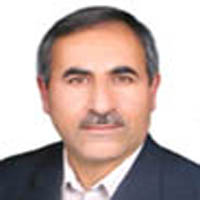Role of manual glide path on better use of rotary Mtwo instruments
Author(s):
Abstract:
Background and Aim
Increased fracture rate of different rotary NiTi files has influenced the prognosis of root canal therapies. Torsion fatigue is one of the most important factors influencing the fracture rate of these rotary instruments; due to increased contact area between file and canal walls. The manual glide path is one of the recommended methods to decrease this problem. The purpose of this study was to investigate the influence of manual glide path on fracture or separation rate of NiTi rotary instruments. Materials and Methods
This experimental study was conducted using 160 root canals of human molar teeth with mild curvature of 15 to 35 degrees. Samples were divided into two groups. In group one manual glide path was carried out with k-type SS#10-20. The final preparation was performed with Mtwo files using crown down technique. The root canals in group two were instrumented with Mtwo files without prior application of manual glide path procedure. Data were collected and analyzed using ANOVA, Mann-Whitney and Mantel-Cox tests. Results
Based on the results of this study, the three variables under investigation in both groups showed significant differences with each other when the defect (P=0.039); fracture or defect (P=0.005), and number of prepared canals (P=0.042) were compared. Survival analysis of Kaplan-Meier demonstrated that, the safety probability after preparation of 10 canals were 81.5% and 53.7% in group one and two respectively. The Mantel–Cox test showed significant difference between the two groups in terms of file working time (P=0.002). Conclusion
Based on these results, the fracture and defect can considerably be decreased when using SS hand files for preparation of apical third, before using NiTi rotary instruments. Key words: Manual glide path - Defect - Fracture - NiTi rotary files. Corresponding Author: Dr. Zarrabi MH., Professor, Endodontics Department and member of Dental Research Center, Faculty of Dentistry, Mashhad University of Medical Sciences. Mashhad, Iran.Language:
Persian
Published:
Journal of Islamic Dental Association of IRAN, Volume:20 Issue: 3, 2008
Page:
184
https://www.magiran.com/p572906
سامانه نویسندگان
مقالات دیگری از این نویسنده (گان)
-
Carotid intima-media thickness in women with rheumatoid arthritis: relationship with lipid profile and inflammation
Zahra Rezaieyazdi, Mina Akbarirad, Sirous Nekooei, , Marzieh Maghrebi, Zahra Ataee, Forouzan Amerizadeh, Masoumeh Salari *
Rheumatology Research Journal, Spring 2025 -
Association between Metabolic Syndrome and Its Components with Cardiovascular Disease Risk in the MASHAD Cohort Study Population
Zahra Asadi, Hamideh Ghazizadeh, Ameneh Timar, Mohammadamin Khodadadegan, Hamed Ghazavi, Mohammad Nasrabadi, Toktam Sahranavard, Mohammadreza Fazlmashhadi, Mohammadamin Mohammadi, Arezoo Rastegar-Moghadam, Ali Ebrahimi Dabagh, Sara Moazedi, Shadi Kadkhoda-Ahmadi
Journal of Cardio -Thoracic Medicine, Winter 2025


